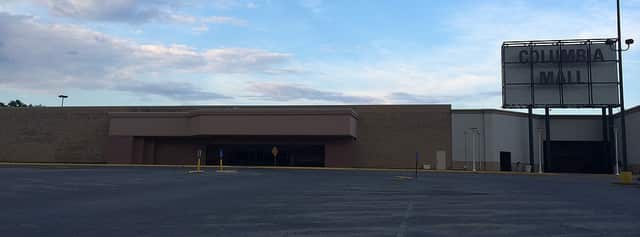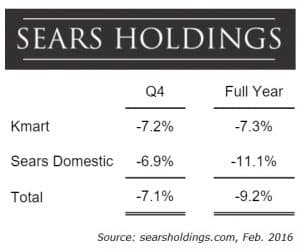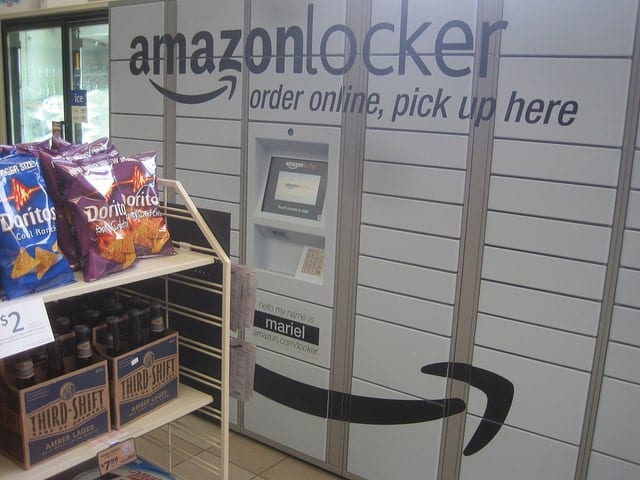Revised Retail Store Strategies After Record Holiday Sales Online
Early in the holidays, we examined the expectations of a record-breaking peak period for e-commerce during the 2015 sales season. These predictions proved to be the case as online sales soared, but not in the kind of even distribution across big brands that some analysts expected.
Far from being boom time for all the major retailers, it appears that Amazon once again dominated the holiday orders, leaving its competitors to fight it out for a distant second spot. The realization that they could be left behind is hitting household names like Walmart and Sears hard, as their strategic announcements during January clearly signal.
Top of the list for many of the major retailers is their network of physical stores. Rather than the expansion of years gone by, however, it is cutting costs and closing stores that's the order of the day.

Altering Retail Store Strategies for Bricks and Mortar Locations
In January, Walmart announced that it will close 154 of its U.S. locations this year. The bulk of these are Walmart Express stores, the smallest format operated by the big-box retailer and a move described as the end of a pilot project, rather than a significant consolidation of the company's position. Even so, the accompanying commitment from Walmart to refocus its energy towards online sales channels and revise retail store strategies also spoke volumes about the evolving - and complex - commercial landscape.
Hot on the heels of Walmart's news was a similar announcement from Sears.

The iconic brand, which also owns Kmart stores, confirmed an acceleration in closings that had already been announced last year, along with poor Q4 results for 2015 (see right) that raise significant questions about the long-term prospects of the two brands' physical locations.
It's no secret that e-commerce has significantly shifted the balance of power for retailers, with online brands like Amazon and eBay convincing customers to spend more online every year. Enhanced service offerings like next- or same-day delivery and discount subscription pricing have only served to accelerate that effect in recent years, leaving traditional big box stores and mall outlets playing catch up.
In an interesting twist, however, the company that has made the most of consumers' desire to shop online may now explore a bricks and mortar strategy of its own.
Reports this month suggest that Amazon could potentially open hundreds of bookstores to accompany its single existing store in Seattle, where the company is based. Although the official position is simply "no comment" and the rumors stem from offhand remarks from a retail property executive, there are elements of an expanded offline presence that could make a lot of sense for Amazon.
Rumors of fully fledged stores suggest that experiments like Amazon Lockers could be just the start of its offline strategy.

For Fiction or Fulfillment?
It's important to note that before it became the e-commerce behemoth we know today, Amazon started out life online as a humble bookseller. That the company would make its first significant steps towards a bricks and mortar presence with bookstores is symbolic to some, sacrilegious to others. Independent booksellers, for example, would feel an added sting in the tale if the online adversary that has sliced into their sales now comes back to fight them on Main St.
In reality, any potential bricks and mortar move could (and should) be about much more than books.
The next stage in Amazon's evolution, as it will be for most popular retailers, is improved order fulfillment. That means providing not only same-day, or even one- and two-hour delivery options, but offering a range of alternatives for customer pick-up.
As convenient as getting orders at our door can be, home delivery also brings with it a wealth of potential hiccups. From missed windows and returned items to porch pirates and items damaged in transit, not everyone finds home shopping as easy as you'd imagine.
For these people, in-store pick-up or retrieval from a third-party location is an attractive option and could provide a competitive advantage in some sectors.
The Best of Both Worlds
What all of these shifts boil down to is meeting the customer wherever they want to be. Although that's no longer as one-dimensional as establishing a vast network of physical stores, bricks and mortar locations cannot be overlooked as a piece of the fulfillment puzzle.
With e-commerce increasingly important and mobile devices only fueling that rise, the online element is clearly starting to dominate the thinking of every major name in retail. That being said, it is premature to suggest that shopping and order fulfillment will move entirely online. Both the purchase and pick-up experiences have real-world nuances that, in some cases, only a physical retail location can supply.

That being said, it is premature to suggest that shopping and order fulfillment will move entirely online. Both the purchase and pick-up experiences have real-world nuances that, in some cases, only a physical retail location can supply.
As we suggested in our supply chain trends to watch in 2016, Amazon understands how important it is to fulfill those diverse consumer demands and is taking some major steps to satisfy them this year.
In a supply chain where the biggest name in online retail can become a shipping company - and Google or Uber could become parcel carriers - it becomes positively ordinary to think of Amazon establishing a bricks and mortar presence. What it means for others involved in delivering seamless e-commerce retail and order fulfillment services is more complex, and an exciting challenge for anyone involved in our industry.
To stay up to speed with the latest order fulfillment news, retail store strategies, and supply chain analysis, subscribe to our e-mail updates here.